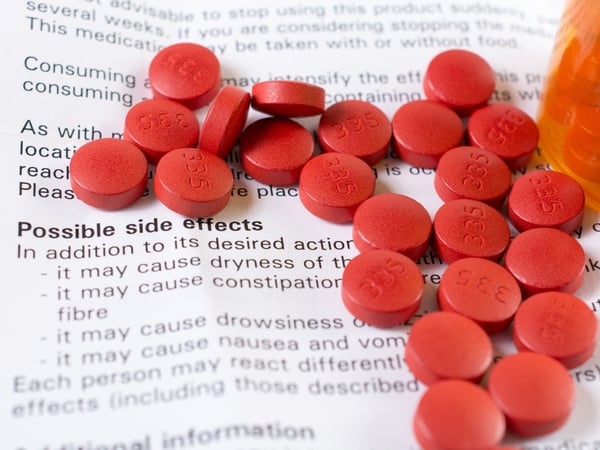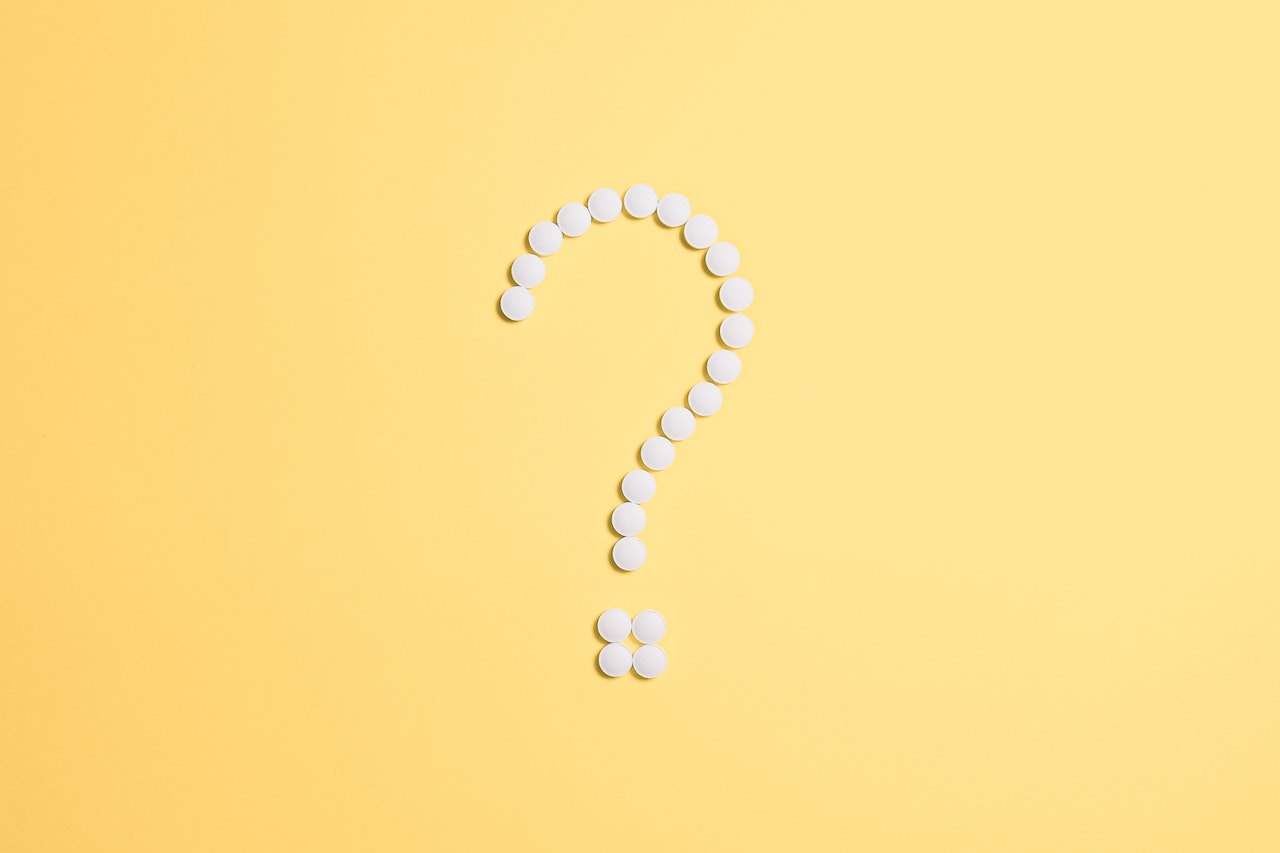Living with ADHD can be challenging, but medication is often used as a treatment option to help individuals manage troubling symptoms, such as:
- Forgetfulness
- Motivation
- Organization
- Procrastination and task avoidance
- Time management
- Focus and distractibility
- Task-switching
ADHD medication options can be split into two categories: stimulants and nonstimulants. Let's review both of those before we dive into the possible side effects.
Disclaimer: Medications affect everyone differently; there can be a lot of trial and error when trying to find the right one for you. Speak with your medical provider or pharmacist about any questions or concerns you may have about medications and their potential side effects.
A review of ADHD medication options
Stimulants
Stimulants are the most widely used treatment method for managing ADHD symptoms.1 These medications work by increasing the levels and bioavailability of certain neurotransmitters, namely norepinephrine (AKA noradrenaline, which is the precursor to epinephrine, AKA adrenaline) and dopamine.2
Commonly used stimulant medications
- Methylphenidate-based ADHD medications, such as Concerta, Focalin, and Ritalin
- Amphetamine-based ADHD medications such as Adderall, Dexedrine, and Vyvanse
Non-stimulants
For those with anxiety and/or heart conditions, nonstimulants will most likely be your physician's first recommendation. Nonstimulants are also considered for those who experienced adverse side effects from stimulants, didn't experience any changes on stimulants, and/or those with "temporary" health conditions, such as pregnancy.
Common nonstimulants used for ADHD treatment
- Alpha-2 agonists such as Kapvay and Guanfacine
- Antidepressants such as Strattera and Wellbutrin
Note: This is not an exhaustive list, but rather gives the most common ADHD treatment options as examples. You can find more information on all of the options available for ADHD medications in this article.
Common ADHD medication side effects
Although many people use ADHD medication to treat their symptoms, there's always the risk of adverse side effects. Everyone responds to medication differently. Therefore, finding what works best for you could potentially take some time. Be sure to bring up your concerns about side effects with your physician before exploring treatment options.
1. Difficulty sleeping
ADHD medications (especially stimulants) are notorious for causing sleep problems.3 ADHDers are already at an elevated risk of sleep troubles, so medication can potentially exacerbate them. Sleep-related issues that people with ADHD often experience include:
- Trouble falling asleep
- Trouble staying asleep
- Delayed Sleep Phase Syndrome
- Revenge Bedtime Procrastination
- Severe fatigue or brain fog upon waking up
Clinicians are often advised to screen for primary sleep disorders, such as Sleep-Disordered Breathing and Restless Leg Syndrome. If you have access to a screening, your medical practitioner can tailor your ADHD treatment based on results. If this isn't an option for you, your physician may suggest a dosage adjustment after observing your side effects over time.
2. Appetite suppression
Stimulants can also lead to disordered eating. In fact, stimulant medications have a long history of being a recognized method for weight loss4 — although they’re generally not endorsed for this function. People are sometimes encouraged by physicians to eat a meal 1-3 hours before taking stimulant medication.5 We also recommend stocking up on high-calorie, high-protein snacks.
Try to set aside time to munch on these each day to ensure your body is getting the nutrients it needs. If the appetite problems persist, document any weight changes and check in with your doctor ASAP.
You can find more information about how food interacts with ADHD medication in this YouTube video and in this blog.
3. Mood changes
If your stimulant dosage is too high, it can cause mood swings. You might experience symptoms such as:
- Irritability
- Intense emotions; emotional dysregulation
- Sedation (acting "spaced out" or "zoned out")
These can usually be alleviated by lowering the dose. But for some people, switching brands or moving to nonstimulants may be more appropriate. Alternatively, studies have shown that some patients - especially adults - benefit from a treatment regimen with a combination of medications.6 Not to mention, ADHDers have a high chance of having comorbid depression.7 A regimen involving both stimulants and nonstimulants may be beneficial for both conditions.
4. The rebound effect
Have you ever noticed that when your ADHD medication wears off, your symptoms come back in full force - sometimes even worse than before? This is known as "The Rebound Effect", and it's speculated to be a result of the medication "leaving the brain too quickly".
To combat this, physicians sometimes prescribe a smaller dose of the medication (or an Immediate Release/IR) to administer before the “rebound” occurs. This can lessen the severity of the rebound, making for a "smoother" transition at the end of the day. Other times, the dosage is adjusted or a new drug is tried.
Note: this doesn't happen with all stimulants. Lisdexamfetamine (also known as Vyvanse or Elvanse) takes an additional step before stimulating the Central Nervous System, causing it to feel "smoother" than drugs like Adderall or Ritalin.
5. Tics and body-focused repetitive behaviors (BFRBs)
Tics are characterized by repeated, sudden, and involuntary movements of any body part. BFRBs are similar, but are more likely to be conscious and/or used as a coping mechanism for stress, anxiety, or understimulation.
Physical tics include:
- Facial grimacing
- Rapid eye-blinking
- Jerking one's arms
Vocal tics can include:
- Sniffing
- Grunting
- Snorting
- Throat-clearing
Body-focused repetitive behaviors include:
- Trichotillomania (hair-pulling)
- Onychophagia (nail-biting)
- Excoriation Disorder (skin-picking)
Whether or not stimulants worsen or cause tics and BFRBs is still widely debated. Studies have shown that ADHDers with tics don’t experience an increase in tic severity while on a low dosage of stimulants.8 However, many people have reported new or worsened habits of BFRBs after starting stimulant medication. Again, this depends heavily on the individual and their existing comorbid conditions, among other factors.
Other side effects
The following side effects are common and not considered to be life-threatening:
- Mild to moderate nausea
- Mild diarrhea
- Headaches
- Dry mouth
- Small increase in blood pressure
- Mild tachycardia (slightly elevated heart rate)
- Mild dizziness (especially upon standing)
- Increased sweating and body odor (especially at night)
While the above side effects aren't necessarily dangerous, we still recommend monitoring them and informing your doctor if they become troublesome.
Rare and dangerous side effects
The following side effects are rare and can be life-threatening for some people. Alert a medical professional immediately or call emergency services if you experience any of the following:
- Severe nausea or vomiting
- Seizures
- Moderate to large increase in blood pressure
- Severe tachycardia (extremely elevated heart rate)
- Extreme, unintended weight loss
- Severe dizziness or fainting
Final thoughts
It's important to remember that this article does not list all of the possible side effects of ADHD meds, because - like all pharmaceuticals - ADHD medication options will affect everyone differently. That said, we still encourage you to discuss any side effects you notice with your doctor. They'll be able to make an informed decision on the safest and most effective route for you.
Best of luck on your journey!







